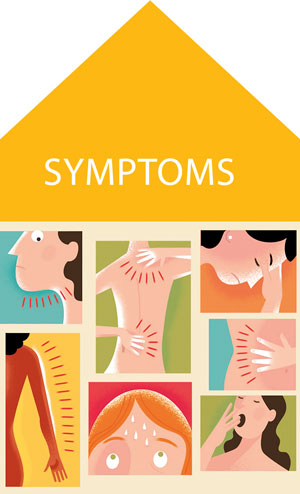18 Aug 2017 - {{hitsCtrl.values.hits}}
 The heart is the organ which pumps oxygenated blood around our body. It also has an extraordinary oxygen-rich blood supply to its own muscles. This feature helps maintain an efficient pumping mechanism, necessary to provide the required degree of perfusion to vital organs in the body.
The heart is the organ which pumps oxygenated blood around our body. It also has an extraordinary oxygen-rich blood supply to its own muscles. This feature helps maintain an efficient pumping mechanism, necessary to provide the required degree of perfusion to vital organs in the body.
This blood supply can shut off due to several reasons and when it does the coronary blood vessels, supplying the heart, get obstructed or narrowed. The cardiac cells which get poorly perfused as a result will die due to the lack of an adequate oxygen supply. This is what is known as a heart attack; when the heart stops pumping temporarily until the adequate blood supply is restored.

According to the American Heart Association, the main etiology behind a heart attack includes the halting of blood supply to heart muscles due to a narrowed blood vessel which is referred to as Ischemic Heart Disease.
Atherosclerosis is the commonest cause for the obstruction of these coronary blood vessels. This takes place due to the development of plaques comprising cholesterol, fatty substances, calcium, fibrin and several other cellular metabolites inside the lumen of vessels. Coronary Artery Spasms are another pathophysiological mechanism by which coronary arteries get narrowed and hardened resulting in a poor oxygenated blood supply to cardiac muscles.
Some scientists also suggest that a heart attack isn’t merely an outcome of an obstruction of blood supply to the heart, but an imbalance between sympathetic and parasympathetic section of the central nervous system including the brain and the spinal cord. According to them, chronic stress is the reason behind major pathophysiology, which triggers a long term releasing of Adrenaline hormone. This happens due to the stimulation of sympathetic nervous system which overrules the compensatory mechanisms of parasympathetic section. This will eventually harm myocardial cells and result in their death, which causes a heart attack.
What exactly happens
The long term development of plaques due to various risk factors described above can gradually obstruct the coronary arteries resulting in a shortage of perfusion to the cardiac muscles. However, other remaining arteries could compensate this imbalance up to a certain extent as long as there remains a sufficient arterial system that’s unaffected .

Moreover, the plaque which has a solid, fibrous capsule covering it, can rupture. This can happen due to sudden triggering factors like stress which will expose the fatty substances resulting in an acute rush of platelets to the site. This can further enhance the blockage by the fibrin clot, formed.
When this scenario takes place, your heart will run out of oxygen rich blood, which acts as a signal to the brain. This results in several symptoms like sweating, increase heart rate, flushing etc. You will also start feeling weak and dizzy, depending on the degree of severity. Dying myocardial cells will trigger a chest pain which may radiate to shoulders, arms, jaw, neck and even to the abdominal area. Survivors from heart attacks describe this pain as a squeezing type of a pain which may last from minutes to hours.
If proper treatment isn’t given as early as possible, myocardial cells will die beyond repair and result in a weak heart. If the level of injury exceeds the level of tolerance, the heart will stop beating completely leading to a stoppage of blood supply to brain. This will bring death within 3-5 minutes.
However, even if proper and timely treatment is provided, already damaged tissues can’t be repaired. So you will never have the completely functioning heart as before. A patient who suffers a heart attack will need several life style modification and post-heart attack rehabilitation procedures, where he or she will be taught how to lead a healthy life. This procedure will help your heart function efficiently.
Reminding the fact that ‘prevention is better than cure’, it’s always good to treat your body as if it’s the most valuable part you own and seek medical advice whenever minute changes are felt and observed.
23 Dec 2024 2 hours ago
23 Dec 2024 3 hours ago
23 Dec 2024 6 hours ago
23 Dec 2024 7 hours ago